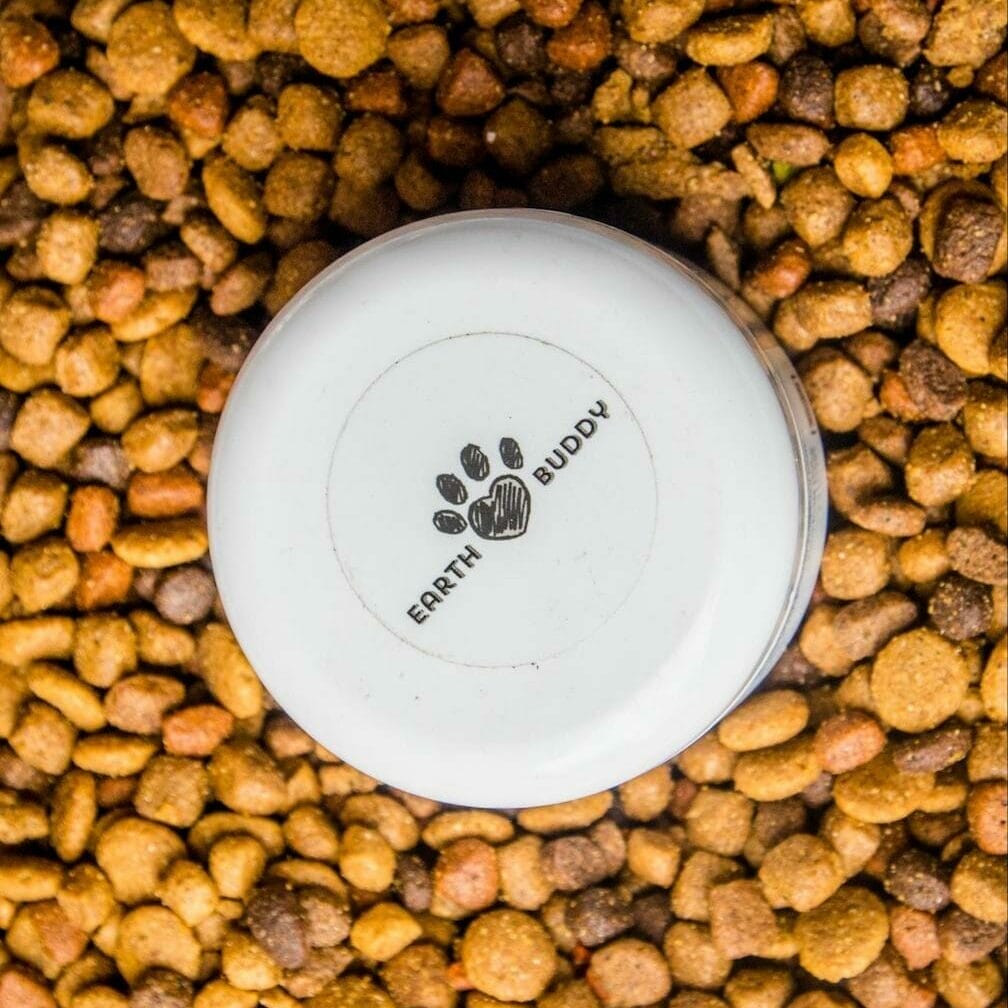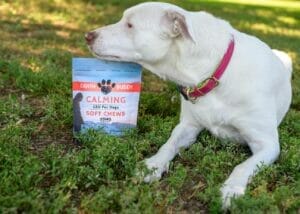The world of pet food is increasingly complex, with an array of choices that can be both overwhelming and misleading for dog owners. One of the most contentious topics in this realm is the use of fillers in dog food. Fillers in dog food are ingredients that are added primarily to provide bulk and texture, and to add shelf life, rather than provide nutritional value. These substances are usually inexpensive and are used to keep the cost of food down.
What Are Fillers in Dog Food?
Common fillers include grains like corn and wheat, as well as soy products and certain kinds of by-products. While these ingredients may not be inherently harmful, they generally offer less nutritional benefit compared to higher-quality proteins, vegetables, and fruits.
The use of fillers can dilute the nutritional profile of the dog food, meaning your pet might need to eat more to get the essential nutrients they require to help keep dogs in peak condition.
- Corn and corn gluten meal: These are often used as cheap sources of protein by the pet food company.
- Soy and soybean meal: Used as a protein source.
- Wheat and wheat gluten: Protein and carbohydrate source.
- Oat hulls: Used for fiber.
- Peanut hulls: Source of fiber.
- Beet pulp: A by-product of sugar beet processing used as a fiber source.
- Animal by-products: These can include a variety of body parts that are less desirable, such as feathers, beaks, and hooves.
- Poultry by-product meal: This is a more generic form of meat meal that can be from any fowl, not necessarily chicken.
- Brewer’s rice: A by-product of the rice milling industry; it’s broken rice that’s missing many nutrients found in whole rice.
- Cellulose: Essentially plant or wood fibers, used to add bulk and fiber to food.
- Meat and bone meal: A low-quality protein source usually made from the less desirable parts of animals.
- Brewer’s yeast: Used for flavor and as a protein source.
- Animal digest: A concentrated broth that can come from unspecified animal sources.
- Potato product: Sometimes the less desirable parts of the potato are used, such as the skins and eyes.
- Rendered fat: While rendered fat can contribute to the palatability of dog food, making it more appealing to pets, generic or vaguely labeled sources like “animal fat” could indicate a less desirable quality.
- Maize flour: Ground corn often used as a carbohydrate source.
- White rice: A carbohydrate source and a binding agent to hold the kibble together.
- Corn syrup: Sweetening agent.
Affordability and Palatability of Pet Foods
The inclusion of fillers in commercial dog food is often a double-edged sword. On one hand, these ingredients can significantly reduce the cost of production, making the pet’s food more affordable for consumers.
Many pet owners may find these lower-priced options appealing, especially when feeding multiple or large-breed dogs that require substantial quantities of food. And some fillers are used to enhance the palatability of the product. For instance, animal digest and brewer’s yeast are often used to make the food more appealing to picky eaters.
However, the downside is that fillers generally offer limited nutritional value. While they may make the food more palatable and affordable, they usually don’t contribute significantly to the overall well-being of the dog.
It’s crucial for pet owners to strike a balance. If affordability is a significant concern, consider dog foods that use more nutritional forms of fillers like beet pulp or rice bran, which can offer some fiber or other nutrients.
Nutritional Deficiency Due To Dog’s Food
The use of fillers in dog food may indeed lead to nutritional deficiencies if they make up a significant portion of the diet. While fillers contribute to the overall mass and texture of the food, they generally contain fewer essential nutrients like proteins, vitamins, and minerals compared to more wholesome ingredients like high-quality meats, fruits, and vegetables.
A diet rich in fillers and low in essential nutrients may lead to dogs consuming larger quantities of food to meet their nutritional requirements. The larger quantity of low quality dog food could lead to health problems.
How to Identify Fillers on Pet Food Labels
Identifying fillers on pet food labels requires a keen eye and some understanding of ingredient nomenclature. As a general guideline, ingredients are listed by weight in descending order. The first ingredients on the label are generally found in higher amounts than the following. Here are some guidelines for spotting fillers as you scroll through:
- Check the primary ingredients: The primary components of the food will be listed first. Ideally, these should be recognizable meat or vegetable products, not grains or by-products.
- Look for grain-based fillers: Ingredients like corn, wheat, soy, and rice are commonly used fillers in pet food. Whole grains are not inherently negative, they should not dominate the ingredient list.
- Identify meat by-products or meal: While not fillers per se, these are less nutritionally desirable than whole meat sources and may be used in less expensive foods to bulk up protein content cheaply.
- Note the use of meal: Ingredients like ‘chicken meal’ or ‘fish meal’ are not necessarily fillers, but the quality can vary widely. Make sure you are buying from a reputable brand that uses high-quality meal.
- Check for unidentified by-products: Ingredients like ‘animal by-product’ are extremely vague and can indicate low-quality filler.
- Check for chemical additives: Dyes, artificial flavors, and preservatives like BHT or ethoxyquin can also act as fillers and are less desirable for a dog’s health.
- Examine nutritional information: High fiber content and low protein could indicate high filler content. Although some high-fiber foods are also very nutritious.
Use trusted resources to check the quality of the pet food brand you’re considering. There are several websites and databases that break down the quality of ingredients in popular pet food brands.
The Cost Factor: Is Cheaper Really Better?
While dog foods that use fillers may be more affordable upfront, the long-term costs can outweigh the initial savings. Dogs eating low-quality food may require more frequent veterinary care and may not live as long, healthy lives as dogs on a balanced diet. This can also mean that the dog food is higher in carbohydrates, which often allows pet food companies to supplement the amount of protein.
Most carbohydrate sources will have a level of protein too, so major pet food manufacturers will use carbohydrate sources to increase total protein without having to use more meat sources. This is a cheap way for pet food manufacturers to con pet owners into believing that there is no difference in quality compared to higher end pet food. Macronutrients are vital, but can be deceiving in terms of what is a quality pet food.
To find out the percentage of carbohydrates in your pet’s food, use the following formula:
Protein% + Fat% + Moisture% + Ash% = (subtract total from 100) = % of carbohydrates
Alternatives to Fillers in Dog Food
When you’re looking for higher-quality dog food that doesn’t rely on fillers for bulk, you have several alternatives that offer more nutritional value. Here are some ingredients and options to consider:
- Whole meats: Whole meats such as chicken, beef, lamb, and fish offer high-quality protein and are easier to digest than by-products and meals.
- Meat meals: While whole meats are ideal, high-quality meat meals like chicken meal or fish meal can also be a good source of protein, as long as they’re sourced from reputable suppliers.
- Vegetables and fruits: Look for foods that contain a variety of vegetables and fruits, like sweet potatoes, blueberries, and spinach. These not only provide fiber but also essential vitamins and antioxidants.
- Legumes: Legumes like chickpeas and lentils are excellent sources of protein and fiber. However, it’s important to note that legumes should not be the main source of protein in a dog’s diet.
- Whole grains: If grains are included, they should be whole grains like brown rice or barley rather than processed grains like cornmeal. Whole grains provide more nutrients and are highly digestible.
- Eggs: Eggs are another excellent source of protein and also contain essential fatty acids and vitamins.
Limited-ingredient dog food and dog treats can be helpful in reducing the risk of fillers in your dog’s diet.
A Carefully Balanced Diet That’s Homemade
Creating a balanced homemade diet for your dog involves more than just tossing together some meat and veggies. First, ask for veterinary advice to determine your dog’s specific nutritional needs based on age, weight, and health problems. Generally, a balanced diet should consist of about 40% protein from high-quality sources like lean meat or fish. About 50% should come from vegetables such as carrots or sweet potatoes, which offer vital nutrients and fiber.
If your dog tolerates grains, consider adding a small portion (about 10%) of cooked rice or oatmeal. Don’t forget healthy fats like fish or olive oil for omega-3 fatty acids, and consult your vet for any additional supplements like calcium or specific vitamins. Cook all the ingredients, mix them together in the right proportions, and store in the refrigerator or freezer in airtight containers.
Pet Parents Consider Raw Feeding
Switching to a raw food diet for your dog means you have complete control over the ingredients, effectively eliminating the fillers commonly found in your dog’s food. Fillers like corn, soy, and wheat are often used to bulk up dog food but offer little nutritional value.
A raw diet typically consists of high-quality proteins, fruits, vegetables, and bones, giving your dog a more nutrient-dense meal option. By opting for raw feeding, you’re sidestepping the unnecessary carbs and empty calories that fillers contribute, focusing instead on providing whole, unprocessed foods rich in essential nutrients, enzymes, and vitamins.
Being a Responsible Pet Parent
The use of fillers in dog food is a topic laden with myths and controversies. However, the facts speak for themselves: fillers provide little to no nutritional value and can contribute to a range of health issues. As a responsible pet owner, it’s up to you to read labels carefully and consult your veterinarian to choose the best food for your canine companion. Investing in high-quality food is an investment in supporting your dog’s long-term health and wellbeing.
For further reading, we recommend:
- https://www.ncbi.nlm.nih.gov/pmc/articles/PMC10066843/
- https://www.ncbi.nlm.nih.gov/pmc/articles/PMC8891928/
- https://www.ncbi.nlm.nih.gov/pmc/articles/PMC9179278/
- https://bmcvetres.biomedcentral.com/articles/10.1186/s12917-019-1824-x
- https://www.ncbi.nlm.nih.gov/pmc/articles/PMC6776306/
- https://www.sciencedirect.com/science/article/pii/S0308814613019201
You Might Also Enjoy
Your dog’s skin is their largest organ making dog skin care a crucial part of…
Like us, our dogs, and other mammalian species, cats have an endocannabinoid system. This system…
Learning how to calm a dog down is an essential skill to have in your…






